Building my first Private Azure Kubernetes Cluster WAF aligned.
Building my first private AKS cluster
Hello welcome back to my blog! Today I want to talk about a different topic than I normally write about, namely Azure Kubernetes.
It is a subject that I would like to know more about and that I will delve into in the coming period to increase my knowledge in this area.
Of course building an basic Azure Kubernetes Cluster is fun, but I want to do it based on best practices and therefore WAF aligned. What I also find important in setting up my resources, is to do this as much as possible with Infrastructure as Code, which is why I am going to build this AKS cluster with Bicep.
For this we need to deploy more resources than just the AKS cluster, why? because we need to be able to access the cluster after the deployment, and we want to configure a test application within the cluster. This test application is taken from the Microsoft Learn site and I will use it to show that the AKS cluster works.
These resources are mostly created using Bicep and the Azure Verified Modules, only the part for setting up the p2s to get a secure connection is installed and done trough the portal, but I'll come back to that later.
So use this cluster especially when you, like me, want to test applications, expand your knowledge and test deployments it's easy to deploy because of the IaC and when you are done with testing you can remove it when not needed anymore.
I would like to take you through my process.
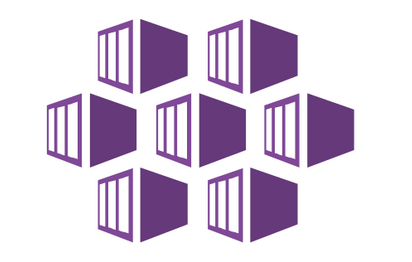
What is the set-up and what do we need.
As I have already indicated, we are going to build the resources using Bicep and make use of the Azure Verified Modules. We're going to start by setting up the bicep and bicepparam files.
- Resource Group for the Azure Kubernetes Cluster and other resources.
- Resource Group for the system and work nodes and VMSS.
- Log Analytics Workspace for logging and monitoring.
- Managed Identity with rights on the AKS cluster.
- Private DNS zone because the AKS cluster will be private.
- Azure Kubernetes Cluster ;-)
- Virtual Network with different subnets.
- Virtual Network Gateway for creation of the Point 2 Site connection.
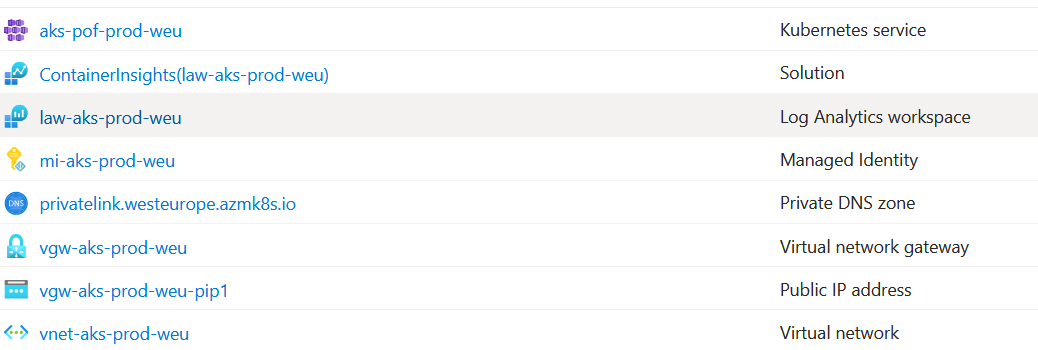
We use a deployment script written in powershell, it will deploy the Bicep in the environment. In this script, the Bicep deployment is not only started, but it also create some extra things to be able to use the cluster properly and to have as little administrative work afterwards, I came up with the following:
- The script first checks in which resource group the resources are placed.
- In the next step, of course, the bicep is deployed with a what if statement.
- Two Entra ID groups are created reader and administrator based on the name variable.
- After this step, a reader and administrator role will be assigned to these new Entra ID groups.
- In between a timeout is taken to avoid replication errors when it needs to be added to the resource group.
- The script looks at who is performing the deployment and automatically places them in the Administrator Entra ID group.
- These rights are of course placed on the Resource Group.

Let's check the specific files
Now let's look further at the Bicep, Bicepparam and Deployment file, in this Bicep file we have multiple resources that are going to be built. You can see an example in the screenshot. In this example I use a Bicepparam file for variables that i don't want to have in the main bicep file.
Bicep file
The AKS resource is WAF aligned and uses best practices, if you don't want to use it in a private connection you need to change values in the bicep but then it will not be waf aligned anymore ;-), so that is not preferable.
1targetScope = 'subscription'
2
3param updatedBy string
4
5@allowed([
6 'test'
7 'dev'
8 'prod'
9 'acc'
10])
11param environmentType string
12
13param subscriptionId string
14
15@description('Unique identifier for the deployment')
16param deploymentGuid string = newGuid()
17
18@description('Product Type: example aks.')
19param productType string
20
21@description('Azure Region to deploy the resources in.')
22@allowed([
23 'westeurope'
24 'northeurope'
25
26])
27param location string
28@description('Location shortcode. Used for end of resource names.')
29param locationShortCode string
30
31@description('Add tags as required as Name:Value')
32param tags object = {
33 Environment: environmentType
34 LastUpdatedOn: utcNow('d')
35 LastDeployedBy: updatedBy
36}
37
38// resource group parameters
39param resourceGroupName string = 'rg-${productType}-${environmentType}-${locationShortCode}'
40param nodeResourceGroup string = '${resourceGroupName}-aks-nodes'
41
42//parameters for AKS Cluster
43param aksClusterName string
44
45//parameters for Log Analytics Workspace
46param logAnalyticsWorkspaceName string
47
48//parameters for Managed Identity
49param managedIdentityName string
50
51
52
53
54//virtual network parameters
55param virtualNetworkName string
56param defaultSubnetName string
57param defaultPrefix string
58param addressPrefix string
59param privateEndpointPrefix string
60param privateEndpointSubnetName string
61param aksSubnetName string
62param aksPrefix string
63param gatewaySubnetName string
64param gatewayPrefix string
65
66
67var VNetConfiguration = {
68 Subnets: [
69 {
70 name: gatewaySubnetName
71 addressPrefix: gatewayPrefix
72 }
73 {
74 name: aksSubnetName
75 addressPrefix: aksPrefix
76 }
77 {
78 name: defaultSubnetName
79 addressPrefix: defaultPrefix
80 }
81 {
82 name: privateEndpointSubnetName
83 addressPrefix: privateEndpointPrefix
84 }
85 ]
86
87 }
88
89//paramamters for the Azure VPN Gateway
90param vpnGatewayName string
91
92
93module createResourceGroup 'br/public:avm/res/resources/resource-group:0.4.0' = {
94 scope: subscription(subscriptionId)
95 name: 'rg-${deploymentGuid}'
96 params: {
97 name: resourceGroupName
98 location: location
99 tags: tags
100
101
102 }
103
104}
105
106module createLogAnalyticsWorkspace 'br/public:avm/res/operational-insights/workspace:0.11.1' = {
107 name: 'law-${deploymentGuid}'
108 scope: resourceGroup(resourceGroupName)
109 params: {
110 name: logAnalyticsWorkspaceName
111 location: location
112 tags: tags
113 }
114 dependsOn: [createResourceGroup]
115}
116
117module createManagedIdentity 'br/public:avm/res/managed-identity/user-assigned-identity:0.4.0' = {
118 name: 'mi-${deploymentGuid}'
119 scope: resourceGroup(resourceGroupName)
120 params: {
121 name: managedIdentityName
122 location: location
123
124
125 tags: tags
126 }
127 dependsOn: [createResourceGroup]
128}
129
130module createPrivateDNSZone 'br/public:avm/res/network/private-dns-zone:0.2.0' = {
131 scope: resourceGroup(resourceGroupName)
132 name: 'dns-${deploymentGuid}'
133 params: {
134 name: 'privatelink.westeurope.azmk8s.io'
135 virtualNetworkLinks: [
136 {
137 name: 'vnet-${deploymentGuid}'
138 registrationEnabled: true
139 virtualNetworkResourceId: createVnet.outputs.resourceId
140 }
141 ]
142 location: 'global'
143 roleAssignments:[ {
144 roleDefinitionIdOrName: 'Contributor'
145 principalId: createManagedIdentity.outputs.principalId
146 principalType: 'ServicePrincipal'
147 }
148]
149 tags: tags
150 }
151 dependsOn: [createResourceGroup]
152}
153
154module createVnet 'br/public:avm/res/network/virtual-network:0.5.4' = {
155 name: 'vnet-${deploymentGuid}'
156 scope: resourceGroup(resourceGroupName)
157 params: {
158 name: virtualNetworkName
159 addressPrefixes: [
160 addressPrefix
161 ]
162 subnets: VNetConfiguration.Subnets
163 roleAssignments:[ {
164 roleDefinitionIdOrName: 'Contributor'
165 principalId: createManagedIdentity.outputs.principalId
166 principalType: 'ServicePrincipal'
167 }
168]
169 location: location
170 tags: tags
171
172 }
173 dependsOn: [createResourceGroup]
174}
175
176module createAksCluster 'br/public:avm/res/container-service/managed-cluster:0.8.3' = {
177 name: 'aks-${deploymentGuid}'
178 scope: resourceGroup(resourceGroupName)
179 params: {
180 name: aksClusterName
181 enablePrivateCluster: true
182 primaryAgentPoolProfiles: [
183 {
184 availabilityZones: [
185 3
186 ]
187 count: 1
188 enableAutoScaling: true
189 maxCount: 1
190 maxPods: 50
191 minCount: 1
192 mode: 'System'
193 name: 'systempool'
194 nodeTaints: [
195 'CriticalAddonsOnly=true:NoSchedule'
196 ]
197 osDiskSizeGB: 0
198 osType: 'Linux'
199 type: 'VirtualMachineScaleSets'
200 vmSize: 'Standard_DS2_v2'
201 vnetSubnetResourceId: createVnet.outputs.subnetResourceIds[1]
202 }
203 ]
204 agentPools: [
205 {
206 availabilityZones: [
207 3
208 ]
209 count: 1
210 enableAutoScaling: true
211 maxCount: 1
212 maxPods: 50
213 minCount: 1
214 minPods: 2
215 mode: 'User'
216 name: 'userpool1'
217 nodeLabels: {}
218 osDiskType: 'Ephemeral'
219 osDiskSizeGB: 60
220 osType: 'Linux'
221 scaleSetEvictionPolicy: 'Delete'
222 scaleSetPriority: 'Regular'
223 type: 'VirtualMachineScaleSets'
224 vmSize: 'Standard_DS2_v2'
225 vnetSubnetResourceId: createVnet.outputs.subnetResourceIds[1]
226 }
227 {
228 availabilityZones: [
229 3
230 ]
231 count: 1
232 enableAutoScaling: true
233 maxCount: 1
234 maxPods: 50
235 minCount: 1
236 minPods: 2
237 mode: 'User'
238 name: 'userpool2'
239 nodeLabels: {}
240 osDiskType: 'Ephemeral'
241 osDiskSizeGB: 60
242 osType: 'Linux'
243 scaleSetEvictionPolicy: 'Delete'
244 scaleSetPriority: 'Regular'
245 type: 'VirtualMachineScaleSets'
246 vmSize: 'Standard_DS2_v2'
247 }
248 ]
249 autoUpgradeProfileUpgradeChannel: 'stable'
250 autoNodeOsUpgradeProfileUpgradeChannel: 'Unmanaged'
251 maintenanceConfigurations: [
252 {
253 name: 'aksManagedAutoUpgradeSchedule'
254 maintenanceWindow: {
255 schedule: {
256 weekly: {
257 intervalWeeks: 1
258 dayOfWeek: 'Sunday'
259 }
260 }
261 durationHours: 4
262 utcOffset: '+00:00'
263 startDate: '2024-07-15'
264 startTime: '00:00'
265 }
266 }
267 {
268 name: 'aksManagedNodeOSUpgradeSchedule'
269 maintenanceWindow: {
270 schedule: {
271 weekly: {
272 intervalWeeks: 1
273 dayOfWeek: 'Sunday'
274 }
275 }
276 durationHours: 4
277 utcOffset: '+00:00'
278 startDate: '2024-07-15'
279 startTime: '00:00'
280 }
281 }
282 ]
283 networkPlugin: 'azure'
284 networkPolicy: 'azure'
285 skuTier: 'Standard'
286 dnsServiceIP: '10.10.200.10'
287 serviceCidr: '10.10.200.0/24'
288 omsAgentEnabled: true
289 monitoringWorkspaceResourceId: createLogAnalyticsWorkspace.outputs.resourceId
290 disableLocalAccounts: true
291 enableAzureDefender: true
292 diagnosticSettings: [
293 {
294 name: 'customSetting'
295 logCategoriesAndGroups: [
296 {
297 category: 'kube-apiserver'
298 }
299 {
300 category: 'kube-controller-manager'
301 }
302 {
303 category: 'kube-scheduler'
304 }
305 {
306 category: 'cluster-autoscaler'
307 }
308 ]
309 metricCategories: [
310 {
311 category: 'AllMetrics'
312 }
313 ]
314 workspaceResourceId: createLogAnalyticsWorkspace.outputs.resourceId
315 }
316 ]
317 privateDNSZone: createPrivateDNSZone.outputs.resourceId
318 nodeResourceGroup: nodeResourceGroup
319 managedIdentities: {
320 userAssignedResourceIds: [
321 createManagedIdentity.outputs.resourceId
322 ]
323 }
324 tags: tags
325 aadProfile: {
326 aadProfileEnableAzureRBAC: true
327 aadProfileManaged: true
328 }
329 }
330 dependsOn: [
331 createResourceGroup
332
333 ]
334 }
335
336module createAzureVpnGateway 'br/public:avm/res/network/virtual-network-gateway:0.6.0' = {
337 scope: resourceGroup(resourceGroupName)
338 name: 'vpn-${deploymentGuid}'
339 params: {
340 name: vpnGatewayName
341 gatewayType: 'Vpn'
342 vpnType: 'RouteBased'
343 skuName: 'VpnGw1AZ'
344 clusterSettings:{
345 clusterMode:'activePassiveNoBgp'
346 }
347 virtualNetworkResourceId: createVnet.outputs.resourceId
348 location: location
349 tags: tags
350 }
351 dependsOn: [createResourceGroup]
352}
Bicepparam
1using 'aks.bicep'
2
3//parameters for the deployment.
4param updatedBy = 'updatedby'
5param subscriptionId = 'yoursubscriptionID'
6param environmentType = 'prod'
7param location = 'westeurope'
8param locationShortCode = 'weu'
9param productType = 'aks'
10
11param virtualNetworkName = 'vnet-${productType}-${environmentType}-${locationShortCode}'
12param defaultSubnetName = 'snet-default'
13param defaultPrefix = '10.0.2.0/24'
14param addressPrefix = '10.0.0.0/16'
15
16param aksSubnetName = 'snet-aks'
17param aksPrefix = '10.0.3.0/24'
18
19param privateEndpointPrefix = '10.0.4.0/24'
20param privateEndpointSubnetName = 'snet-pe'
21
22param gatewayPrefix = '10.0.1.0/27'
23param gatewaySubnetName = 'GatewaySubnet'
24
25param aksClusterName = '${productType}-pof-${environmentType}-${locationShortCode}'
26
27param logAnalyticsWorkspaceName = 'law-${productType}-${environmentType}-${locationShortCode}'
28
29param managedIdentityName = 'mi-${productType}-${environmentType}-${locationShortCode}'
30
31param vpnGatewayName = 'vgw-${productType}-${environmentType}-${locationShortCode}'
Deployment file
Keep in mind that you change the values where you have stored your bicepparam and bicep file, so it can use that location for the deployment.
--template-file
--parameters
1param(
2 [Parameter(Mandatory = $true)][string] $subscriptionID = "",
3 [Parameter(Mandatory = $true)][ValidateSet("northeurope", "westeurope")][string] $location = "",
4 [Parameter(Mandatory = $true, ParameterSetName = 'Default')] $productType = "",
5 [Parameter(Mandatory = $true, Position = 3)] [ValidateSet("prod", "acc", "dev", "test")] [string] $environmentType = "",
6 [switch] $deploy
7)
8
9# Ensure parameters are captured
10Write-Host "Subscription ID: $subscriptionID"
11Write-Host "Location: $location"
12Write-Host "Product Type: $productType"
13Write-Host "Environment Type: $environmentType"
14
15$deploymentID = (New-Guid).Guid
16
17<# Set Variables #>
18az account set --subscription $subscriptionID --output none
19if (!$?) {
20 Write-Host "Something went wrong while setting the correct subscription. Please check and try again." -ForegroundColor Red
21 exit 1
22}
23
24$updatedBy = (az account show | ConvertFrom-Json).user.name
25$userId = (az ad signed-in-user show --query id --output tsv)
26$location = $location.ToLower() -replace " ", ""
27
28$LocationShortCodeMap = @{
29 "westeurope" = "weu";
30 "northeurope" = "neu";
31}
32
33$locationShortCode = $LocationShortCodeMap.$location
34$resourceGroup = "rg-$productType-$environmentType-$locationShortCode"
35
36Write-Host "Using Resource Group Name: '$resourceGroup'" -ForegroundColor Cyan
37
38if ($deploy) {
39 Write-Host "Running a Bicep deployment with ID: '$deploymentID' for Environment: '$environmentType'..." -ForegroundColor Green
40 az deployment sub create `
41 --name $deploymentID `
42 --location $location `
43 --template-file ./aks.bicep `
44 --parameters ./aks.bicepparam `
45 --parameters updatedBy=$updatedBy location=$location locationShortCode=$LocationShortCode productType=$productType environmentType=$environmentType `
46 --confirm-with-what-if `
47
48 if (!$?) {
49 Write-Host "Bicep deployment failed. Stopping execution." -ForegroundColor Red
50 exit 1
51 }
52 Write-Host "Bicep deployment completed successfully." -ForegroundColor Green
53}
54
55Write-Host "Proceeding with Entra ID group creation and role assignment for Resource Group '$resourceGroup'." -ForegroundColor Cyan
56
57# List of required Entra ID groups and their corresponding Azure roles
58$groupRoleMap = @{
59 "aks-gg-$environmentType-administrators" = "Azure Kubernetes Service RBAC Cluster Admin";
60 "aks-gg-$environmentType-reader" = "Azure Kubernetes Service RBAC Reader";
61}
62
63# Ensure Entra ID groups exist and assign roles
64foreach ($groupName in $groupRoleMap.Keys) {
65 $existingGroup = az ad group list --query "[?displayName=='$groupName']" --output json | ConvertFrom-Json
66
67 if (-not $existingGroup) {
68 Write-Host "Creating Entra ID group: $groupName" -ForegroundColor Yellow
69 $groupId = az ad group create --display-name $groupName --mail-nickname $groupName.Replace("-", "") --query id --output tsv
70
71 if (!$groupId) {
72 Write-Host "Failed to create Entra ID group: $groupName. Please check your permissions." -ForegroundColor Red
73 exit 1
74 }
75 Write-Host "Entra ID group '$groupName' created successfully." -ForegroundColor Green
76 } else {
77 Write-Host "Entra ID group '$groupName' already exists. Skipping creation." -ForegroundColor Cyan
78 $groupId = $existingGroup[0].id
79 }
80
81 # Wait for group replication before assigning roles
82 Write-Host "Waiting for Entra ID replication..." -ForegroundColor Cyan
83 Start-Sleep -Seconds 30
84
85 # Assign role at the Resource Group level (retry logic)
86 $roleName = $groupRoleMap[$groupName]
87 $maxRetries = 3
88 $retryCount = 0
89 $roleAssignmentSuccess = $false
90
91 while ($retryCount -lt $maxRetries -and -not $roleAssignmentSuccess) {
92 Write-Host "Assigning '$roleName' role to group '$groupName' on Resource Group '$resourceGroup'" -ForegroundColor Yellow
93 az role assignment create --assignee $groupId --role "$roleName" --scope /subscriptions/$subscriptionID/resourceGroups/$resourceGroup --output none
94
95 if ($?) {
96 Write-Host "Successfully assigned '$roleName' role to '$groupName'." -ForegroundColor Green
97 $roleAssignmentSuccess = $true
98 } else {
99 Write-Host "Retrying role assignment in 20 seconds..." -ForegroundColor Yellow
100 Start-Sleep -Seconds 20
101 $retryCount++
102 }
103 }
104
105 if (-not $roleAssignmentSuccess) {
106 Write-Host "Failed to assign '$roleName' role to '$groupName' after multiple attempts." -ForegroundColor Red
107 }
108
109 # Add the signed-in user to the administrator group
110 if ($groupName -match "administrators") {
111 Write-Host "Adding current user ($updatedBy) to group '$groupName'." -ForegroundColor Yellow
112 az ad group member add --group $groupName --member-id $userId
113
114 if (!$?) {
115 Write-Host "Failed to add user '$updatedBy' to '$groupName'. Please check permissions." -ForegroundColor Red
116 } else {
117 Write-Host "Successfully added user '$updatedBy' to '$groupName'." -ForegroundColor Green
118 }
119 }
120}
What do we need to do after the deployment?
When we are done deploying there are still a few things that need to be created and configured to access the cluster.
We start by setting up a point 2 site connection, more information on how to set this up can be found in the Microsoft documentation and can be found at this link.
Let's make a summery:
- Grant consent and install the Enterprise Application using this link, Keep in mind that the account you do this with needs to a Cloud Administrator.
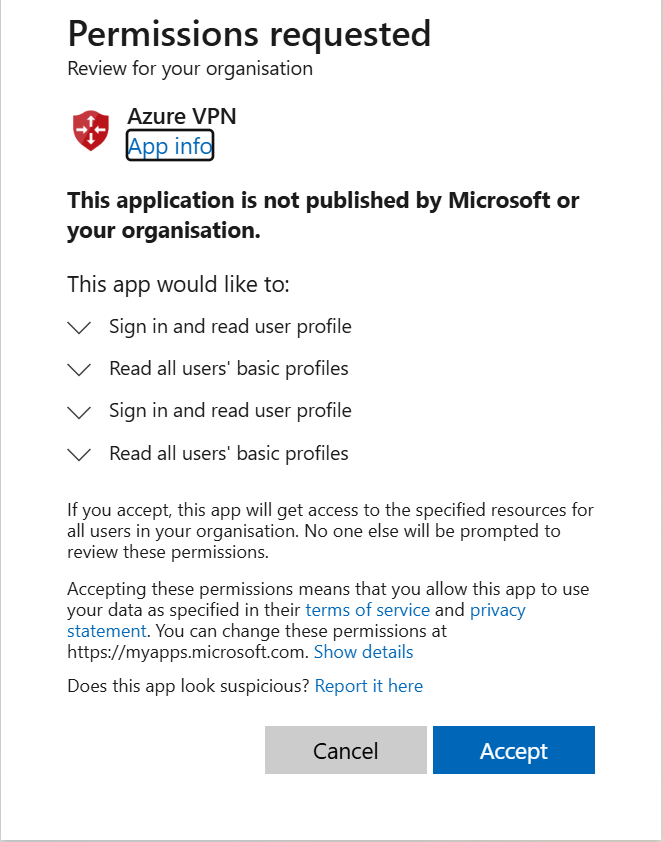
- Fill in the below information in the screenshot and use your own TenantID, use also a address range that doesn't conflict with IP addresses.
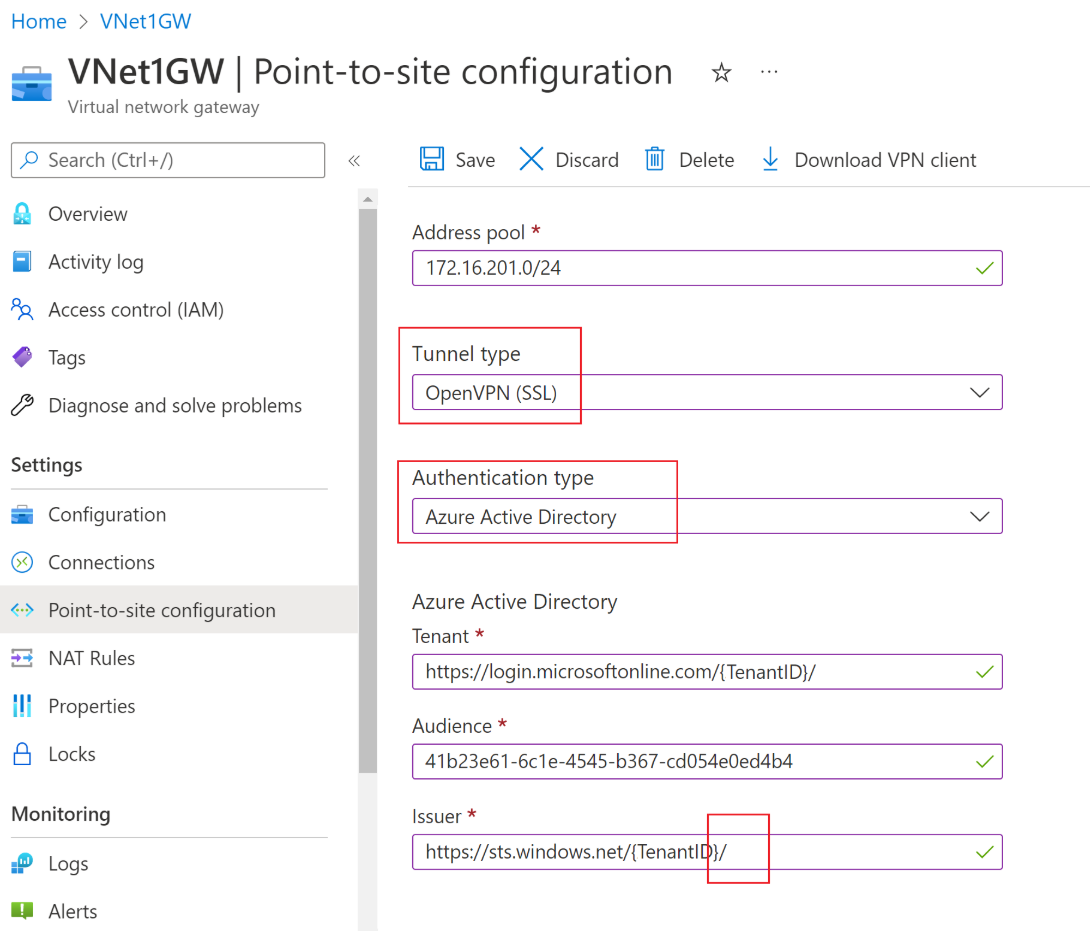
Download the Azure VPN client
Download the VPN configuration from the Point 2 Site configuration and extract it to a new folder, use this folder when importing the settings to the Azure VPN and save the connection.

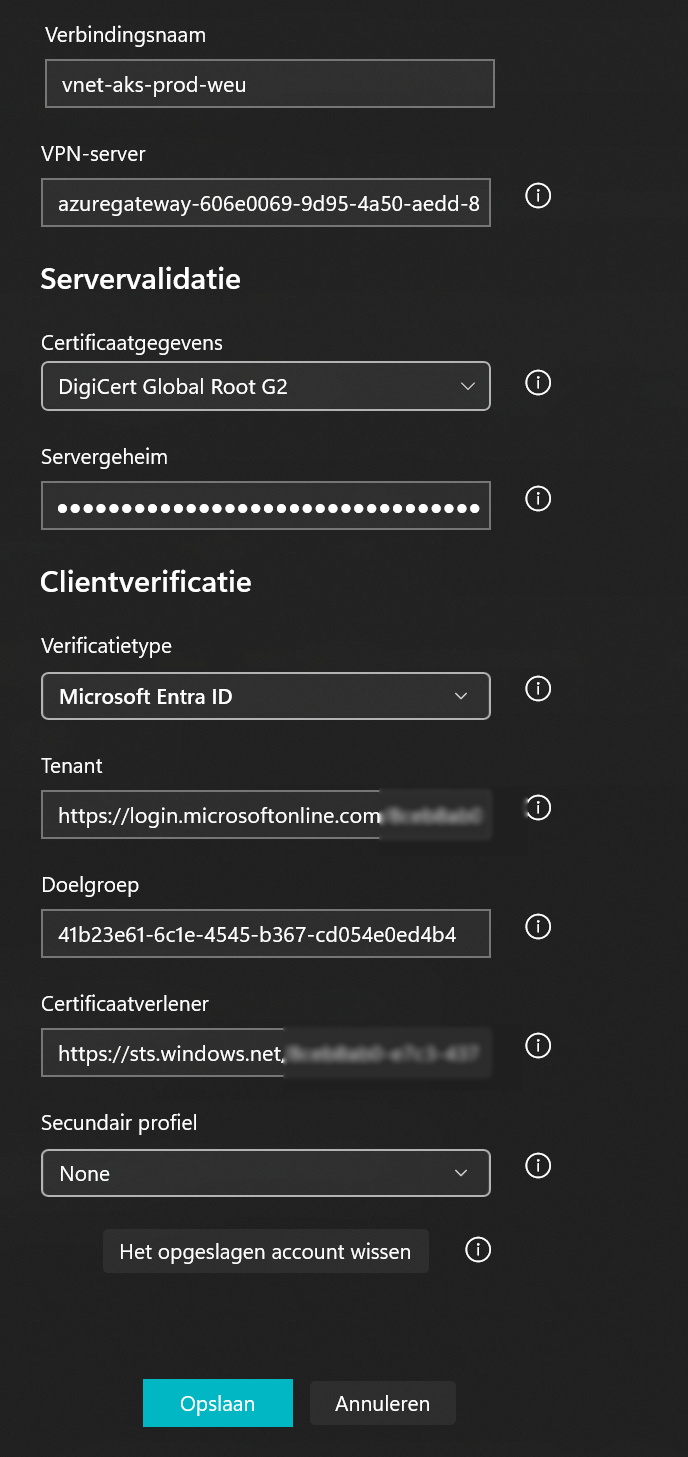
Use the Account that has started the deployment and test if the tunnel will connect.

To connect to the AKS cluster we can use two ways to access this, let me explain.
The first option is, when you use the WAF aligned Azure Verified Module to add the private DNS in the lmhost file.
We now need to add the private DNS zone record (ip-address) from the Azure Kubernetes in the lmhosts file so you can use the private DNS record to connect to your cluster, this is needed because we don't have an DNS solution installed and the cluster is not public acccesible.
How can you do this?
- Go to your created private DNS zone and check and copy the entress.

- Add the address in the lmhost files.

The second option is to modify the Bicep Module to use the enablePrivateClusterPublicFQDN: true this will let you connect to the Cluster when using the --public-fqdn switch. This is still WAF aligned because the API is still only accessible private.
Let's connect to the AKS cluster?
Ok great! We have done the preparations now let's connect to the AKS cluster.
You can do this by going to the cluster in the Azure Portal and clicking on the connect button. This will show you the steps you need to take to connect to the Azure Kubernetes Cluster.

When you click connect, the commands you need to enter into your terminal, will appear on the right side, and as i explained in the above section you can also use the --public-fqdn after the az aks get-credentials --resource-group rg-aks-prod-weu --name aks-pof-prod-weu --overwrite-existing when you have used the enablePrivateClusterPublicFQDN: true in the Bicep file.
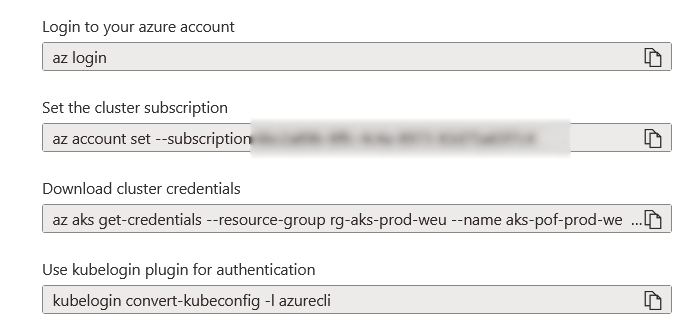
Please note that you log in with the account that you used when deploying Bicep, as this account is immediately placed in the administrator group and therefore has rights to the cluster. If you want to use a different account, place it in the administrator group that was created at the beginning.
Once you have executed the commands correctly, you will be connected to the cluster and you can run the following command to test this:
kubectl get namespaces
If successful you will get the following namespaces back.
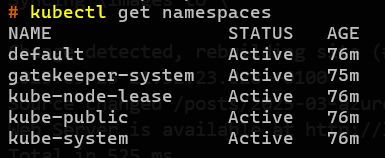
Let's test and execute a deployment.
It is of course nice that we have set this up, but let's also test the AKS cluster and create a (web)application. I will use the examples given on the Microsoft site., this will basically create a dummy website.
- Copy paste and save this file as a yaml file in your directory.
1apiVersion: apps/v1
2kind: StatefulSet
3metadata:
4 name: rabbitmq
5spec:
6 serviceName: rabbitmq
7 replicas: 1
8 selector:
9 matchLabels:
10 app: rabbitmq
11 template:
12 metadata:
13 labels:
14 app: rabbitmq
15 spec:
16 nodeSelector:
17 "kubernetes.io/os": linux
18 containers:
19 - name: rabbitmq
20 image: mcr.microsoft.com/mirror/docker/library/rabbitmq:3.10-management-alpine
21 ports:
22 - containerPort: 5672
23 name: rabbitmq-amqp
24 - containerPort: 15672
25 name: rabbitmq-http
26 env:
27 - name: RABBITMQ_DEFAULT_USER
28 value: "username"
29 - name: RABBITMQ_DEFAULT_PASS
30 value: "password"
31 resources:
32 requests:
33 cpu: 10m
34 memory: 128Mi
35 limits:
36 cpu: 250m
37 memory: 256Mi
38 volumeMounts:
39 - name: rabbitmq-enabled-plugins
40 mountPath: /etc/rabbitmq/enabled_plugins
41 subPath: enabled_plugins
42 volumes:
43 - name: rabbitmq-enabled-plugins
44 configMap:
45 name: rabbitmq-enabled-plugins
46 items:
47 - key: rabbitmq_enabled_plugins
48 path: enabled_plugins
49---
50apiVersion: v1
51data:
52 rabbitmq_enabled_plugins: |
53 [rabbitmq_management,rabbitmq_prometheus,rabbitmq_amqp1_0].
54kind: ConfigMap
55metadata:
56 name: rabbitmq-enabled-plugins
57---
58apiVersion: v1
59kind: Service
60metadata:
61 name: rabbitmq
62spec:
63 selector:
64 app: rabbitmq
65 ports:
66 - name: rabbitmq-amqp
67 port: 5672
68 targetPort: 5672
69 - name: rabbitmq-http
70 port: 15672
71 targetPort: 15672
72 type: ClusterIP
73---
74apiVersion: apps/v1
75kind: Deployment
76metadata:
77 name: order-service
78spec:
79 replicas: 1
80 selector:
81 matchLabels:
82 app: order-service
83 template:
84 metadata:
85 labels:
86 app: order-service
87 spec:
88 nodeSelector:
89 "kubernetes.io/os": linux
90 containers:
91 - name: order-service
92 image: ghcr.io/azure-samples/aks-store-demo/order-service:latest
93 ports:
94 - containerPort: 3000
95 env:
96 - name: ORDER_QUEUE_HOSTNAME
97 value: "rabbitmq"
98 - name: ORDER_QUEUE_PORT
99 value: "5672"
100 - name: ORDER_QUEUE_USERNAME
101 value: "username"
102 - name: ORDER_QUEUE_PASSWORD
103 value: "password"
104 - name: ORDER_QUEUE_NAME
105 value: "orders"
106 - name: FASTIFY_ADDRESS
107 value: "0.0.0.0"
108 resources:
109 requests:
110 cpu: 1m
111 memory: 50Mi
112 limits:
113 cpu: 75m
114 memory: 128Mi
115 startupProbe:
116 httpGet:
117 path: /health
118 port: 3000
119 failureThreshold: 5
120 initialDelaySeconds: 20
121 periodSeconds: 10
122 readinessProbe:
123 httpGet:
124 path: /health
125 port: 3000
126 failureThreshold: 3
127 initialDelaySeconds: 3
128 periodSeconds: 5
129 livenessProbe:
130 httpGet:
131 path: /health
132 port: 3000
133 failureThreshold: 5
134 initialDelaySeconds: 3
135 periodSeconds: 3
136 initContainers:
137 - name: wait-for-rabbitmq
138 image: busybox
139 command: ['sh', '-c', 'until nc -zv rabbitmq 5672; do echo waiting for rabbitmq; sleep 2; done;']
140 resources:
141 requests:
142 cpu: 1m
143 memory: 50Mi
144 limits:
145 cpu: 75m
146 memory: 128Mi
147---
148apiVersion: v1
149kind: Service
150metadata:
151 name: order-service
152spec:
153 type: ClusterIP
154 ports:
155 - name: http
156 port: 3000
157 targetPort: 3000
158 selector:
159 app: order-service
160---
161apiVersion: apps/v1
162kind: Deployment
163metadata:
164 name: product-service
165spec:
166 replicas: 1
167 selector:
168 matchLabels:
169 app: product-service
170 template:
171 metadata:
172 labels:
173 app: product-service
174 spec:
175 nodeSelector:
176 "kubernetes.io/os": linux
177 containers:
178 - name: product-service
179 image: ghcr.io/azure-samples/aks-store-demo/product-service:latest
180 ports:
181 - containerPort: 3002
182 env:
183 - name: AI_SERVICE_URL
184 value: "http://ai-service:5001/"
185 resources:
186 requests:
187 cpu: 1m
188 memory: 1Mi
189 limits:
190 cpu: 2m
191 memory: 20Mi
192 readinessProbe:
193 httpGet:
194 path: /health
195 port: 3002
196 failureThreshold: 3
197 initialDelaySeconds: 3
198 periodSeconds: 5
199 livenessProbe:
200 httpGet:
201 path: /health
202 port: 3002
203 failureThreshold: 5
204 initialDelaySeconds: 3
205 periodSeconds: 3
206---
207apiVersion: v1
208kind: Service
209metadata:
210 name: product-service
211spec:
212 type: ClusterIP
213 ports:
214 - name: http
215 port: 3002
216 targetPort: 3002
217 selector:
218 app: product-service
219---
220apiVersion: apps/v1
221kind: Deployment
222metadata:
223 name: store-front
224spec:
225 replicas: 1
226 selector:
227 matchLabels:
228 app: store-front
229 template:
230 metadata:
231 labels:
232 app: store-front
233 spec:
234 nodeSelector:
235 "kubernetes.io/os": linux
236 containers:
237 - name: store-front
238 image: ghcr.io/azure-samples/aks-store-demo/store-front:latest
239 ports:
240 - containerPort: 8080
241 name: store-front
242 env:
243 - name: VUE_APP_ORDER_SERVICE_URL
244 value: "http://order-service:3000/"
245 - name: VUE_APP_PRODUCT_SERVICE_URL
246 value: "http://product-service:3002/"
247 resources:
248 requests:
249 cpu: 1m
250 memory: 200Mi
251 limits:
252 cpu: 1000m
253 memory: 512Mi
254 startupProbe:
255 httpGet:
256 path: /health
257 port: 8080
258 failureThreshold: 3
259 initialDelaySeconds: 5
260 periodSeconds: 5
261 readinessProbe:
262 httpGet:
263 path: /health
264 port: 8080
265 failureThreshold: 3
266 initialDelaySeconds: 3
267 periodSeconds: 3
268 livenessProbe:
269 httpGet:
270 path: /health
271 port: 8080
272 failureThreshold: 5
273 initialDelaySeconds: 3
274 periodSeconds: 3
275---
276apiVersion: v1
277kind: Service
278metadata:
279 name: store-front
280spec:
281 ports:
282 - port: 80
283 targetPort: 8080
284 selector:
285 app: store-front
286 type: LoadBalancer
- In your terminal connect to the cluster as explained in the above steps.
- Use the command
kubectl create namespace test-application - In your terminal browse where you have stored your yaml file that you have saved.
- Use the command
kubectl apply -f .\aks-quickstart.yaml -n test-applicationthis will execute the deployment in namespace test-application
If everything is running as planned you will see deployments being created.
If you use the command
kubectl get pods -n test-applicationyou will see the pods that have a running state.
If you use the command
kubectl get service store-front --watch -n test-applicationyou will see the IP addresses needed to access the webapplication.
If you now go to your browser and use the external ip-address, you will get the website, and yes it's not connected with a certificate so you will see the not secure message, but it's only for testing purposes.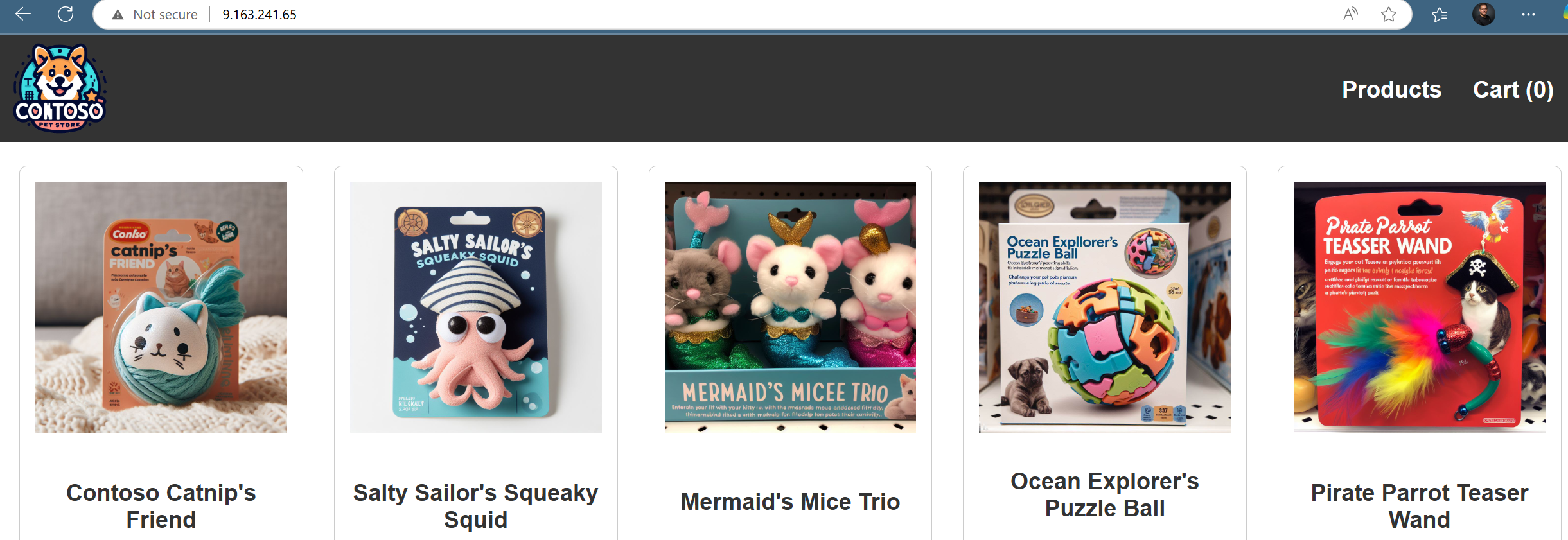
So we have an operating WAF aligned AKS cluster!
In this blog we have explained how a private aks cluster can be easily set up using Bicep and Azure Verified Modules with the necessary resources to connect to the Azure Kubernetes Cluster.
With this AKS cluster you can easily set up and test applications in a secure way and of course it is also ideal to use when you want to test your own AKS skills and of course expand this.
I hope I have inspired you in this article to roll this out and test it yourself. See you next time!